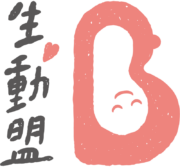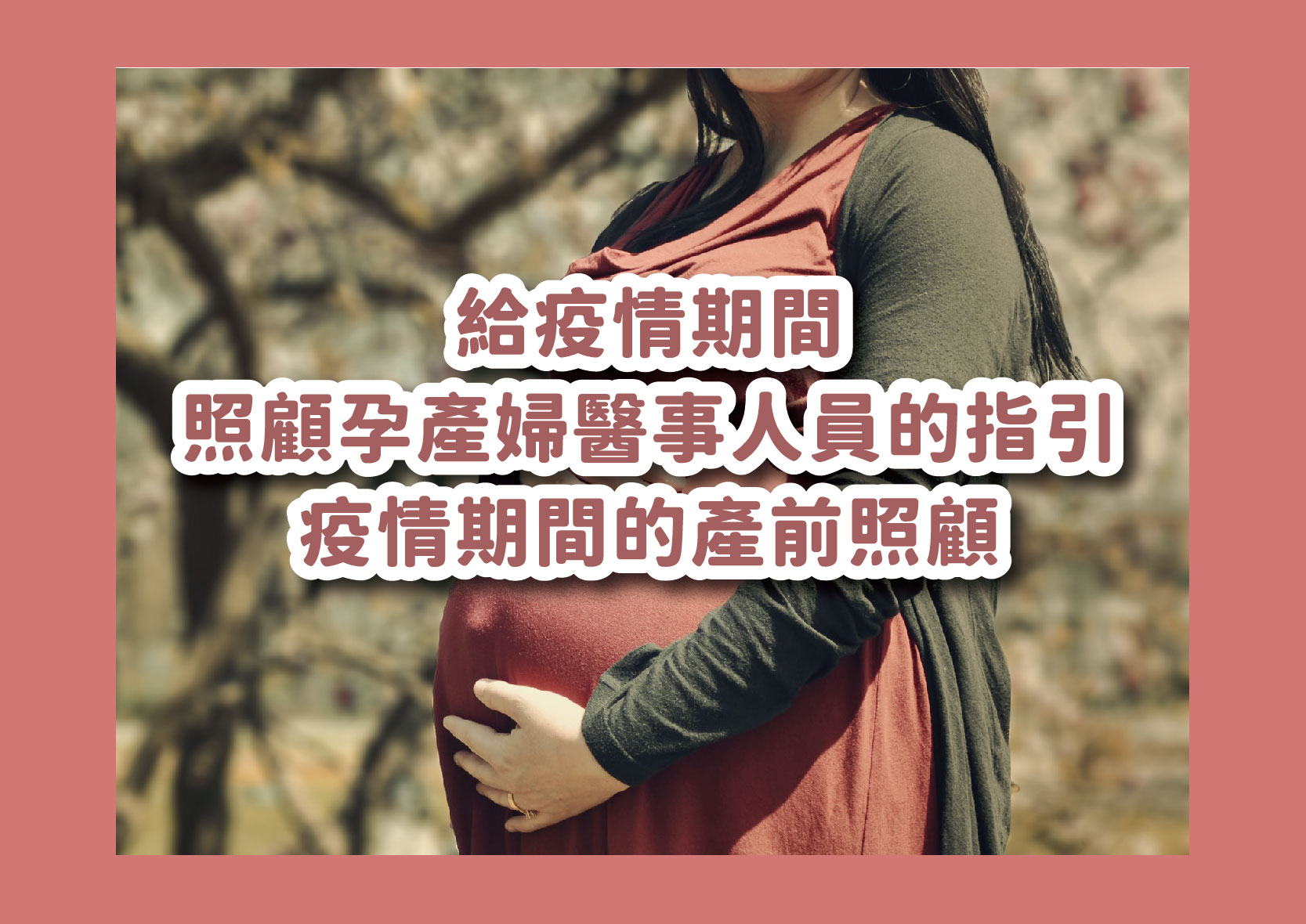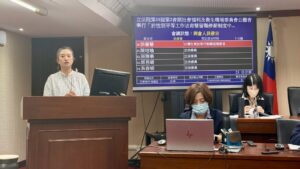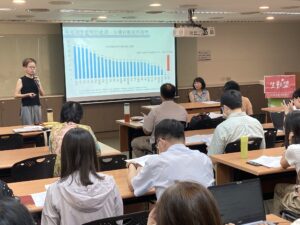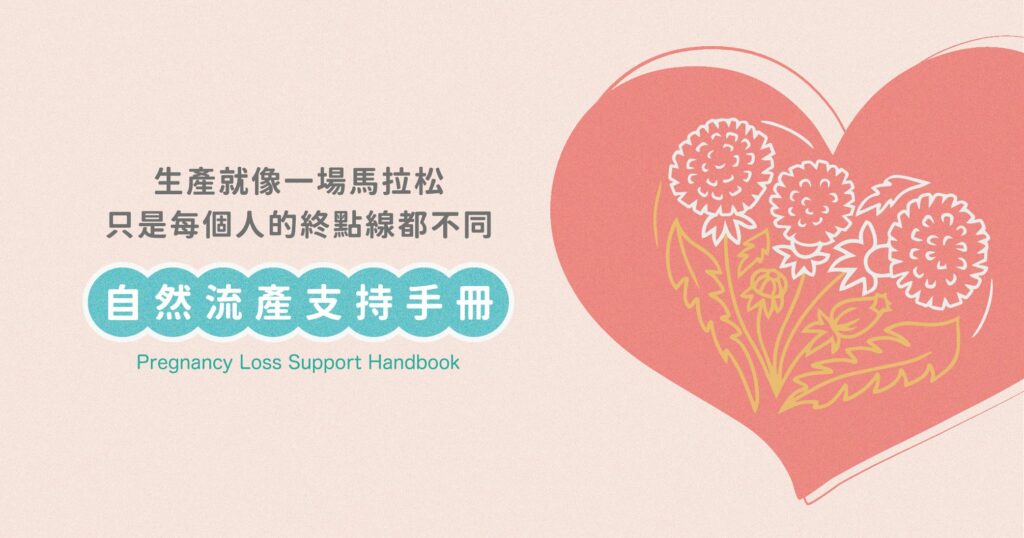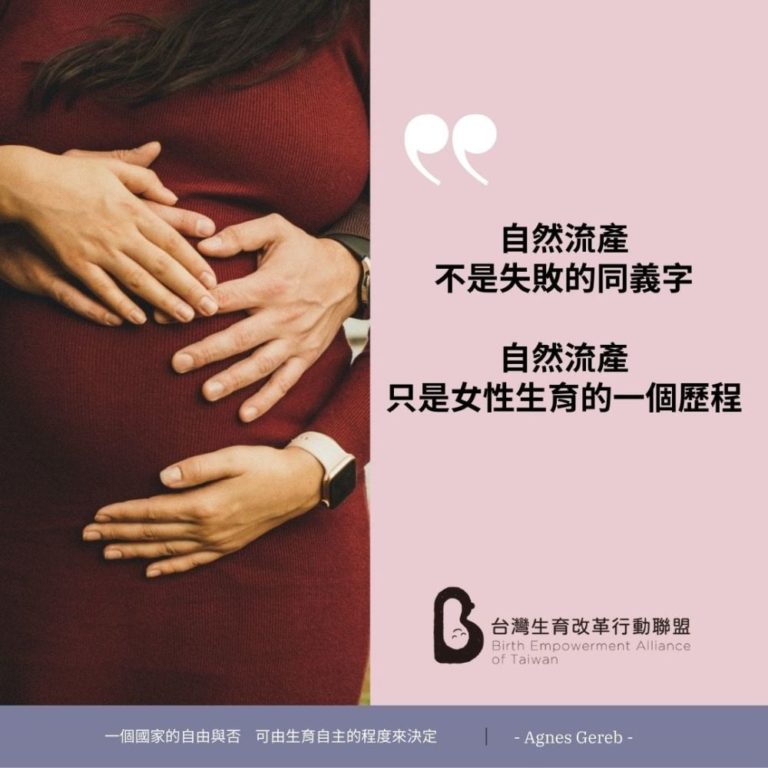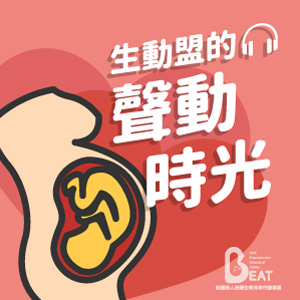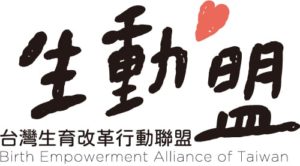2.1 產前照護的機構需要考量的事項有哪些?
建議
- Women should be advised to continue their routine antenatal care, although it may be modified, unless they meet self-isolation criteria for individuals or households (including social bubbles) with suspected or confirmed COVID-19
應該建議產婦繼續他們原有的例行產前照護項目,但內容或許需要進行一些調整,以符合疑似或確診案例的個人或居家自我隔離需求(包括社交泡泡)。
- Service modifications are required to enable social distancing measures, to reduce the risk of transmission between women, staff and other clinic/hospital visitors, and to provide care to women who are self-isolating for suspected or confirmed COVID-19 for whom a hospital attendance is essential.
照護項目的調整是為了要能夠保持社交距離,並降低產婦,醫護人員,以及其他診所/醫院訪客之間互相傳染的風險。同時也是為了提供因為疑似或者確診而正在自我隔離產婦所需的照護,因為對這些產婦來說,進出醫療院所就診是必要的。
- The NICE recommended schedule of antenatal care should be offered in full wherever possible. Ideally and where safe, these appointments should be offered in-person, particularly to those from BAME communities, those with communication difficulties or those living with medical, social or psychological conditions that put them at higher risk of complications, or adverse outcomes, during pregnancy.
條件允許之下,應該盡量提供NICE (National Institute of Health and Care Excellence, 國家健康與照護卓越研究所)所建議的產前照護清單中完整的項目。在理想的情況下,如果安全的話,這些照護應該是面對面的,特別是那些黑人亞裔與少數族群社區的產婦,那些有溝通障礙的產婦,或是那些醫療、社會或心理狀況不佳的產婦,特別是這些狀況可能會導致在懷孕期面對更高風險的併發症,或是更多不良的生產結果。
- Maternity staff should be aware that for some women with hearing or communication difficulties, mask wearing may prevent lip reading.
孕產照護人員應該要意識到,對於某些聽力或溝通有障礙的產婦來說,帶著口罩可能會阻礙他們讀唇溝通。
- Basic assessments such as blood pressure and urine testing, and assessment of fundal height in women not receiving serial fetal growth ultrasound scans, are still required. Trusts and health boards should plan local strategies to ensure women are able to receive this monitoring, even where antenatal care is provided virtually.
基本的評估,像是血壓和尿液檢查,以及產婦的宮底高度評估(對於沒有接受一系列胎兒成長超音波檢查所使用),這些仍然都是必要的。國民保健服務各地的衛生單位,應該規劃在地的策略,以確保產婦能夠接受這些健康監測,即使當地的產前照護需要透過遠端線上的方式來提供。- If it is considered more appropriate for appointments to be conducted remotely, for example during periods of ‘local lockdown’, units should employ teleconferencing or videoconferencing consultations.The limitations of remote consultation methods should be recognised, including being aware that some women will not have sufficient internet access on their mobile devices or other computer hardware.
經過考量後若決定遠端看診是更好的選項,例如在「地區性封城」期間,醫護單位應該設置電話會議或視訊會議的技術諮詢。也要認可遠端諮詢模式的限制,包括要注意有些產婦的手機或者其他電腦設備不會有足夠的網路流量可使用。 - It should be acknowledged that remote appointments, particularly by telephone, may cause new challenges in relationship-building between women and healthcare professionals, especially among socially vulnerable groups, women for whom English is not their first language or women who are hearing impaired.
我們要特別注意,遠端看診,特別是透過電話,可能會形成產婦與醫療專業人員之間建立醫病關係的新挑戰,尤其是社會上弱勢的族群,那些母語不是英語的產婦,或者有聽力障礙的產婦。 - Healthcare professionals should be aware that the women may have unvoiced concerns regarding their care if they have less contact in person.
醫事人員應該要特別注意,產婦可能會因為較少的面對面接觸,難以表達一些照護上的顧慮。 - Healthcare professionals should be aware that women may not have the privacy within their home to disclose private, personal and sensitive information. Efforts should be made at in-person appointments, such as ultrasound scans, to discuss sensitive issues such as domestic violence, sexual and psychological abuse, psychiatric illness and recreational drug use.
醫事人員應該要注意,產婦在自宅內,可能不會有隱私的空間可以自在地揭露個人敏感的隱私資訊。盡可能還是進行實體的門診,像是超音波掃描,以方便與產婦討論敏感的議題,像是家庭暴力,性侵害(sexual abuse)或精神虐待,精神疾病,以及娛樂性用藥。
- If it is considered more appropriate for appointments to be conducted remotely, for example during periods of ‘local lockdown’, units should employ teleconferencing or videoconferencing consultations.The limitations of remote consultation methods should be recognised, including being aware that some women will not have sufficient internet access on their mobile devices or other computer hardware.
- When in-person appointments are required (e.g. for blood tests, maternal examination or ultrasound scans) these should be arranged alongside other in-person maternity appointments to limit repeated clinic attendance.
需要實體的門診時(例如,為了血液檢測,產前檢查或是超音波掃描),這些檢測都應該跟其他實體的產檢門診安排在一起,以減少重複進出診所或醫院。
- Appropriate screening for diabetes in pregnancy should still be provided, following NICE guidance as far as possible, with awareness that modifications to screening protocols are associated with a reduction in the detection of cases of gestational diabetes.
盡可能地遵循 NICE 的指導原則,持續提供必要的糖尿病篩檢,同時應該注意,篩檢程序的調整,跟發現妊娠糖尿病的機率降低,有所關聯。
- Particular consideration should be given to pregnant women who have comorbidities which make them clinically vulnerable to the effects of COVID-19. Shared waiting areas should be avoided.
如果產婦有合併症(comorbidities),會更容易因為Covid-19而症狀嚴重,就需要特殊注意。應避免與其他人共用候診區。- If women who are in this group attend hospital, where possible, they should be cared for in single rooms.
當這一類的產婦進出醫療院所時,可能的話,應該在單人房中接受照護。
- If women who are in this group attend hospital, where possible, they should be cared for in single rooms.
- Women should be able to notify the unit regarding non-attendance owing to self- isolation for COVID-19 using standard telephone numbers that are already available to them.
因為COVID-19,進行自我隔離而無法就診的產婦,應該能夠透過原有的電話號碼,通知醫療單位。- There should be a system in place to effectively identify, support and follow up women who have missed appointments.
醫療院所應該建立一個系統,去找出支持,並且追蹤那些錯過門診的產婦。 - Units should appoint a named midwife or consultant to coordinate care for women unable to attend appointments owing to self-isolation or a positive test. Missed appointments should be reviewed and either rescheduled if an in-person review is necessary or converted to a virtual appointment.
醫療單位應該指定一位助產士或諮詢人員,對於那些因為自我隔離或確診而無法就診的產婦,整合協調照護的方式。錯過門診的情況應該被檢視,如果面對面的檢查是必須的,那就需要重新安排門診時間,或者改成透過網路或電話就診。
- There should be a system in place to effectively identify, support and follow up women who have missed appointments.
- For women receiving antenatal care across different sites, units must ensure that there are clear pathways for communication via handheld notes, electronic records and correspondence to general practitioners
有一些產婦需要在不同地點,不同的醫療院所,接受產前照護。醫事人員必須透過醫生手寫的紀錄,電子病歷,以及和家庭醫師之間的通訊等方式,確保跟這些產婦保持暢通的溝通管道。
- Open access to day assessment and maternity triage services should be maintained. Women should be actively encouraged to attend if they have concerns about their or their baby’s wellbeing.
隨時可以就診的評估站( day assessment) 以及產房附設的評估站(maternity triage services) 應該繼續。產婦如果對於自己或者嬰兒的健康安全有顧慮的話,應該積極鼓勵她們前往接受這些評估。
- Continuity of care should be maintained wherever possible, particularly for women from vulnerable groups who may also be at greater risk from COVID-19.
只要可能,應該要持續接受產前照護,特別是弱勢族群的產婦,她們同時也可能是COVID-19的高風險群。
- Healthcare providers should be aware of specific changes to services which have been suggested through regularly updated subspecialty service guidance available via the RCOG website.
醫事人員應該注意皇家婦產科醫學會建議的修正方案,這些都會在網站上定期更新。
指南的證據與依據摘要
Antenatal and postnatal care should be regarded as essential and women encouraged to attend, while observing social distancing and infection prevention measures, as recommended by the UK Government. Studies in the UK and internationally have shown that women who do not attend antenatal services are at increased risk of maternal death, stillbirth and other adverse perinatal outcomes. NICE guidance on antenatal care, including the schedule of antenatal appointments recommended for women with uncomplicated pregnancies, is well- established in the UK.
產前與產後的照護應該被視為必要的程序,在適當保持社交距離與做好感染預防措施的前提下,英國政府建議,應該鼓勵產婦接受這些照護。根據英國本土以及國際上的研究顯示,沒有接受產前照顧的產婦,因生產死亡,死產,以及其他新生兒不良出生結果的風險相對提高。在英國,NICE 針對產前照護的指南已經發展的很完整,包括無併發症產婦的建議產前檢查就診頻率。
The UK Government has published a list of conditions that make an individual extremely vulnerable to the severe effects of COVID-19, along with guidance on how best to protect these individuals.
英國政府已經發表了一個清單,列出感染 COVID-19後極易發生重大後果的情況,以及如何保護這些人的最佳作法。
A small study in Massachusetts, USA, conducted in spring 2020 (early in the pandemic) showed that there was no relationship between the number of in-person antenatal visits and the risk of developing COVID-19 for pregnant women, suggesting that nosocomial transmission could be minimised. No similar evidence exists for the UK.
根據美國麻州在2020年春天(疫情爆發初期)進行的一項小規模研究指出,實體就診產前檢查的次數,與產婦感染COVID-19的風險,這兩者之間沒有關聯性,這意味著院內傳染的情況可以被降到最低。在英國則沒有這類的研究。
Another small survey study from the USA found that the offer of remote appointments to pregnant women at high risk of obstetric complications reduced the rate at which women ‘did not attend’ their appointments, and that 86.9% of women were satisfied with the care received. As discussed earlier, the majority of pregnant or recently pregnant women who participated in an online questionnaire survey felt there were barriers to accessing maternity care while anxieties were expressed about changes to antenatal services including remote consultations.
美國的另一個小規模研究顯示,針對生產併發症高風險的產婦提供遠距看診,可以降低「未能就診」的比例,而有86.9%的產婦對於遠距照護感到滿意。如同前面討論到的,在一項線上問卷調查發現,大多數或近期懷孕的產婦表示,疫情期間進行產前檢查的確有一些障礙,對於產前照護的變動,包括改為遠距諮詢模式,也有些焦慮。
NHS England has issued guidance on the adoption of remote consultations in secondary care in order to minimise hospital visits. Data directly comparing telephone/video appointments with in-person appointments are not available; until these are, healthcare providers should follow locally agreed guidelines for antenatal care provision.
英格蘭國民保健署已經建議採用遠距問診,作為次要照護模式,以減少到醫療院所的頻率。針對電話/視訊看診與面對面實體看診的差異,目前還沒有資料可以直接比較。在那之前,醫事人員應該遵循當地衛生單位所提供的指引,進行產前照護。
During the pandemic, modifications to the NICE recommendation to screen for gestational diabetes were suggested to reduce the risk of pregnant women being infected with SARS- CoV-2 during hospital visits. While the number of cases of COVID-19 avoided using this strategy is unknown, evidence has quantified the reduction in diagnoses of gestational diabetes. The rationale for the modified testing strategy is described in the Appendix of the RCOG document Guidance for maternal medicine services in the coronavirus (COVID-19) pandemic.
在疫情期間,NICE對於妊娠糖尿病篩檢的建議,有一些調整,以減少產婦在醫院受 SARS-CoV-2 感染的風險。儘管透過這個策略是否能降低COVID-19的感染尚無法確認,但是量化數據顯示,妊娠糖尿病的診斷已有所減少。檢測策略修正的理由,可參考附件「RCOG文件,COVID-19疫情期間產前檢查指南」。
The use of personal protective equipment (PPE) and facemasks in particular can lead to difficulties in communication, especially for women with hearing loss. Masks block lip movements and facial expressions and muffle the high frequency por tions of sound. Various strategies to improve communication with women of the deaf community have been suggested.
使用個人防護裝備(Personal Protective Equipment),特別是口罩,可能會造成溝通上的障礙,特別是聽力受損的產婦。口罩會遮住嘴唇的動作與臉部的表情,也會讓聲音的高頻部分,變得模糊。建議提供聽力受損族群不同的溝通管道,以改善溝通的效率。
The care of pregnant women with complex healthcare needs is challenging during a pandemic. To support healthcare providers caring for these women, the following guidance documents to assist maternity units with changes to antenatal and postnatal care were developed and can be found on the RCOG and RCM websites.
在疫情期間,照護有複雜照護需求的產婦,很具挑戰性。為了支持醫事人員提供產婦所需的照護,以下的指南文件旨在協助孕產照護機構針對產前與產後檢查所需要進行的調整,這些文件都可以在 RCOG 跟 RCM 網站上取得。
- Guidance for antenatal and postnatal services in the evolving coronavirus (COVID-19) Pandemic
- Guidance for antenatal screening and ultrasound in pregnancy during the coronavirus (COVID-19) pandemic
- Guidance for maternal medicine in the coronavirus (COVID-19) pandemic (Version 2.5)
- RCM 專業臨床簡報:
- RCM Professional briefing on providing safe and effective virtual consultations
- RCM Professional briefing on domestic abuse during the pandemic
- RCM Professional briefing on public health care during the pandemic, including cessation support
- RCM Professional briefing on antenatal care for women with and without COVID-19
2.2 產婦進行產前檢查就診需要考量什麼?要給產婦哪些建議?
建議
- Staff members should ensure that adequate PPE is used for in-person visits.
孕產照護工作人員,在面對面實體就診時,應該確保使用適當的個人防護裝備。
- Information and guidance should be available in languages spoken in the local communities served by the maternity unit.
孕產照護機構所支援的社區,有其在地所使用的語言。所有的資訊與指南,都應該有在地語言的版本。
- All women and any accompanying visitors (where permitted) should be advised to wear facemasks or face coverings in line with guidance from national authorities unless exempt.
所有產婦以及任何陪伴產婦的訪客(在情況允許的情況下),建議都應該戴口罩或者面罩。除非有特殊情況,否則都應該遵從政府衛生單位的指南。
- Evidence suggests that individuals of BAME background, including pregnant women from these groups, are at higher risk of developing severe complications of COVID-19. Therefore, it is advised that:
證據顯示,黑人亞裔與少數族裔背景,包括這些族群中的孕婦,感染 COVID-19 後導致嚴重併發症的機率相對較高。因此,我們建議:- Healthcare providers should discuss these risks with women of BAME background in a sensitive manner.
醫療照護機構應該細緻地與這些少數族裔背景的產婦,討論這些風險。 - Women of BAME background are encouraged to seek advice without delay if they are concerned about their health.
鼓勵這些少數族裔的產婦,只要有任何健康上的顧慮,都應該立即尋求協助。
- Healthcare providers should be aware of this increased risk, and have a lower threshold to review, admit and consider multidisciplinary escalation of symptoms in women of BAME background.
醫事人員應該認可這項風險,針對少數族裔產婦,在檢視狀況、收住院,以及考量症狀可能加劇的情況,都要設下較低的門檻。 - When reorganising services, maternity units should be particularly cognisant of evidence that individuals from a BAME background are at particular risk of developing severe and life-threatening COVID-19 disease
在重新安排照護服務時,孕產照護機構應該特別注意,少數族裔產婦感染 COVID-19 後導致嚴重甚至危急生命的風險特別高。
- Healthcare providers should discuss these risks with women of BAME background in a sensitive manner.
- Healthcare professionals should proactively advise all pregnant women to contact emergency antenatal services if they have any concern about their or their baby’s wellbeing.
醫事人員應該主動建議所有產婦,只要有任何關於自身或者胎兒健康的顧慮,都應該與緊急產前照護服務機構聯繫。
- Carbon monoxide (CO) testing of all pregnant women should be undertaken, where it is safe to do so.
在安全的情況下,所有產婦都應該進行一氧化碳(CO)的檢測。
- Women should continue to take folic acid and vitamin D supplements in line with national recommendations.
產婦應該根據國家建議使用原則,繼續服用葉酸與維他命D營養補充品。
- Women should be advised that influenza vaccination is still safe at all gestations of pregnancy and is recommended to protect both the woman and baby from the adverse effects of becoming seriously ill with flu during pregnancy.
應該告知產婦,懷孕期間的每一個階段施打流感疫苗仍然是安全的,且建議這麼做,以免產婦或胎兒因為流感嚴重生病而產生不良影響。
- Pregnant women will continue to need at least as much support, advice, care and guidance in relation to pregnancy, childbirth and early parenthood as before the pandemic, especially socially vulnerable women (with risk factors including poverty, homelessness, substance misuse, being an asylum seeker, experiencing domestic abuse and mental health problems).
產婦在懷孕、生產以及新生兒照護,會持續需要支持,建議,照護,與諮詢,至少要疫情之前一樣多。對於社會弱勢族群的產婦(風險因子包括貧窮、無家、藥物濫用、難民、受家暴,以及有精神疾病的困擾),特別是如此。- Midwifery, obstetric and support staff should remain aware of the support needs for all women, acknowledging local and national restrictions on visitors and accompanying persons may affect the amount of support that women require.
助產界,產科,以及相關支援人員,都應該持續關注所有產婦對於支持鼓勵的需求,認可地區性與國家等級對於訪客以及陪產人數的限制,有可能會影響產婦所需的支持。
- Midwifery, obstetric and support staff should remain aware of the support needs for all women, acknowledging local and national restrictions on visitors and accompanying persons may affect the amount of support that women require.
- Healthcare providers should be aware of the increased risk of domestic abuse in pregnancy, which has escalated during the pandemic.Women should be encouraged to share any concerns at every opportunity and be provided with advice and support on how to access the appropriate services if required.
醫事人員應該注意,疫情期間懷孕婦女受到家暴的風險逐漸提高。盡量在每一個可能的機會,鼓勵產婦分享任何的擔憂,並且在有需要的時候,提供如何取得相關服務的建議與協助。
- Healthcare providers should maintain in-person appointments with women when there are safeguarding concerns, in order to provide extra support.
如果有需要保護措施的狀況,醫療照護機構應該維持與產婦面對面實體看診,以提供額外的協助。
- Women should be asked about their mental health at every contact.Women who require further support should be signposted to resources and local services, which may be provided by virtual means.These include:
每一次接觸時都應該詢問產婦的精神狀態。對於需要進一步協助的產婦,要清楚地引介相關的資源、在地的服務措施,這些服務可能是以線上的模式進行。這包括:- Sources of self-help for anxiety and stress.
自我處理焦慮和壓力的相關資源。 - Self-referral to local IAPT (Improving Access to Psychological Therapies) services in England. In Scotland, advice is available from Parentclub and NHS Inform. Further information is available from the RCM and Royal College of Psychiatrists websites.
在英格蘭,請產婦自行與在地的心理健康服務約診。在蘇格蘭,可以接洽 ParentClub 與NHS Inform。更多的資源可以在皇家助產學會,與皇家精神醫學會的網站上取得。
- Sources of self-help for anxiety and stress.
- Women who express concern about their mental health or ‘red flag’ symptoms, such as suicidal thoughts or sudden mood changes, or where their families express these concerns on their behalf, should be supported to access urgent care either through appropriate signposting or, when required in severe cases, by immediate referral.
產婦如果表達對於自己的精神狀態有疑慮或是有「紅旗」症狀,像是有自殺的想法或是突然間的情緒變化,或是由家人代為轉達這類的疑慮,醫事人員都應該協助產婦取得緊急照護,包括清楚提供適當的指引,或者當情況危急時,就直接轉介。
- Services should establish triage processes to ensure that women with mental health concerns can be appropriately assessed.
照護服務應該建立檢傷分類程序,以確保精神狀態有疑慮的產婦,可以獲得適當的評估。
指南的證據與依據摘要
The appropriate use of PPE is to protect healthcare workers, women and their families by functioning as a physical barrier to the transmission of infectious particles present in bodily fluids. Units should follow the regularly updated public health guidance issued jointly by the DHSC, Public Health Wales, Public Health Agency (PHA) Northern Ireland, Health Protection Scotland/National Services Scotland, PHE and NHS England (published by PHE on their behalf), and review this in collaboration with their local guidance and infection control teams. There are also clear guidelines on PPE from the RCM.
適當地使用個人防護裝備是為了保護醫療照護工作人員,產婦與他們的家人,作用像是實體的屏障,隔絕會使人感染,潛藏在體液中的粒子。醫護單位應該遵循由DHSC,Public Health Wales, Public Health Agency (PHA) Northern Ireland, Health Protection Scotland/National Services Scotland, PHE and NHS England (由 PHE 代為出版) 共同出版,定期更新的公眾健康指南,並且配合在地的指引與防疫團隊的措施。皇家助產學會(RCM) 也有發布關於個人防護裝備的清楚指南。
The UK Government has issued guidelines on the use of face coverings within enclosed spaces in England; these are applicable to women attending outpatient maternity appointments (including scans) and to hospital visitors. Scotland, Northern Ireland and Wales have issued similar guidance.
英國政府已經發表了在英格蘭密閉空間內使用面部遮蓋物的指南;這些資訊也適用於到門診進行產前檢查(包括各種掃描)的產婦,以及醫院的訪客。蘇格蘭,北愛爾蘭與威爾斯也都已經發表了類似的指南。
Before this pandemic, there was already extensive evidence of the inequality of experience and outcomes for women of a BAME background giving birth in the UK. The increased risks of COVID-19 among individuals of a BAME background are likely to result from a number of factors such as socioeconomic disadvantage, and the fact that they are more likely to work in key worker roles, including health and social care. Women of a BAME background who are living with socioeconomic deprivation and/or in crowded conditions, those who were born outside the UK and whose first language is not English, and those with a high BMI and/or underlying medical conditions appear to be at particularly high risk.
在這次疫情爆發之前,已經有很多證據顯示,英國少數族裔的產婦在生產過程中,生產經驗與生產結果都有不平等的情況。少數族裔產婦感染COVID-19風險較高的原因,有許多不同的因素,像是社經地位的弱勢,以及他們更有可能是關鍵領域的工作人員,像是醫療照護與社會救助類的工作。少數族裔的婦女,如果生活在社經條件被剝奪且/或擁擠的環境中,或是在英國海外出生、母語並非英語者,或是身體質量指數(BMI)過高且/或有潛在疾病,她們都明顯面臨較高的風險。
The RCOG Race Equality Taskforce has launched a joint campaign with FiveXMore that aims to help communication with BAME women, with five easy to remember steps.
皇家婦產科醫學會(RCOG) 種族平等任務小組(Race Equality Taskforce)已經和 FiveXMore共同合作啟動了一項專案活動,目的就是利用五個簡單好記的步驟,協助與少數族裔產婦溝通。
There is currently an absence of accurate information about the additional risk of smoking and severe COVID-19 infection. A scientific brief from the WHO on smoking and COVID-19, concludes that smoking is associated with increased severity of disease and death in hospitalised COVID-19 patients. The UK National Centre for Smoking Cessation and Training have advised maternity units to resume carbon monoxide testing on all pregnant women, where it is safe to do so. A risk assessment must be undertaken prior to CO testing including a well ventilated room and being able to maintain a 2 m distance between the woman and healthcare professionals. Recommendations on smoking screening and cessation support are based on previous evidence on the effectiveness of these interventions.
關於抽煙是否會增加感染COVID-19風險,加重染疫後果,目前還沒有確實的資料。世界衛生組織(WHO)針對抽煙與Covid-19發布了一則科學概要(scientific brief)表示,抽菸跟增加重症,以及增加染疫住院病患的死亡率,有所關連。英國的國家戒菸與訓練中心( National Centre for Smoking Cessation and Training)已經建議孕產照護機構,在安全的情況下,重新針對所有孕婦做一氧化碳的檢測。在做一氧化碳檢測之前,必須進行風險評估,包括安排一個通風良好的房間,同時能夠讓產婦與醫療照護人員之間維持2公尺的距離。抽煙篩檢與戒菸支持的建議,是根據先前對於這些介入有效性的證據。
Pregnancy is a risk factor for hospital admission with influenza. Influenza vaccination is safe and effective for pregnant women, who are always included in the annual NHS flu campaign. It is possible to be co-infected with influenza and SARS-CoV-2. The impact of co-infection is not known. In addition, influenza symptoms are difficult to distinguish from COVID-19 symptoms.
因流感住院的風險因子中,亦包括懷孕。流感疫苗對於產婦是安全且有效的,這個族群一直都是 NHS 年度流感宣傳活動的目標對象。同時感染流感跟 SARS-CoV-2 是可能的。同時感染的影響目前未知。除此之外,流感的症狀與 COVID-19 的症狀很相似,很難分辨兩者的差異。
Isolation, bereavement, financial difficulties, insecurity and inability to access suppor t systems are all widely recognised risk factors for mental ill health and are expected to affect individuals more than usual during the pandemic. Access to mental health services has also been constrained and delays to accessing care were evident in two maternal deaths by suicide that occurred during the spring of 2020.
隔離,親人死別,財務困難,不安全感,以及無法取得支援系統,都是危害心理健康的的風險因子,早有許多證據支持。可以預期,這些風險因子在疫情期間對,對人們的影響會更大。從2020年春天有兩個產婦自殺的案例可以看出,在疫情期間,人們較難取得心理健康照護服務,所需照護也容易延遲 。
This pandemic has resulted in an increased level of anxiety and other mental health problems in the general population. This has had a larger impact on women than on men. There is increasing evidence that this is likely to be even greater for pregnant women, as pregnancy represents a period of additional uncertainty. Specifically, these anxieties are likely to revolve around: a) COVID-19 itself, b) the impact of social isolation resulting in reduced support from wider family and friends, c) the potential of reduced household finances and d) major changes in antenatal and other NHS care, including some appointments being changed from in person to telephone contact. Meta-analyses and systematic reviews have found higher rates of perinatal mental health disorders during the pandemic, including anxiety and depression.
這次的疫情使得焦慮,以及其他心理健康方面問題的嚴重程度,提高了許多,而對於女人的影響又比對男人的影響更大。有越來越多證據顯示,對於產婦的影響又更大,因為懷孕代表一段時期會增加額外的不確定感。特別是,這些焦慮很可能會受到以下因素的影響:a) COVID-19 本身,b) 社交隔離會降低來自家庭與朋友的支持,c) 家戶收入有可能會減少 d) 在產前照護與其他 NHS 照護上的重大改變,包括就診的方式從面對面的實體診改為用電話方式聯繫。整合性的分析,以及系統性的文獻回顧都發現,在疫情期間,孕產婦在周產期間的心理健康問題比例升高,包括焦慮與憂鬱。
The Royal College of Psychiatrists, in collaboration with NHS England and NHS Improvement, have developed recommendations on mental wellbeing during the COVID-19 pandemic.
在皇家精神科學院與英格蘭國民健康服務系統(NHS England),及英國國民健康服務質量改善司(NHS Improvement)的合作之下,已經針對COVID-19 疫情期間的心理健康狀態,提出建議。
The coronavirus pandemic has increased the incidence of domestic abuse. Additional advice regarding support for victims of domestic abuse during the pandemic is available from the UK government. In addition, Women’s Aid, Save Lives and Refuge have updated guidance for people experiencing domestic abuse during the COVID-19 outbreak.
COVID-19 疫情使得家庭暴力事件增加。英國政府已額外提出建議,以提供給疫情期間家暴受害者所需的支持。此外,女性的支援(Women’s Aid),拯救生命(Save Lives)以及 庇護所( Refuge) 等機構,也一直更新各種指南資料,提供給在疫情期間經歷家暴的受害者參考。
2.3 產婦如果疑似或確認感染 COVID-19,需要進出醫院或給予建議,應該如何進行照護?
建議
針對打電話到孕產服務機構的產婦:
- If women report symptoms attributed to COVID-19 on the phone to maternity services, consider differential diagnoses for fever, cough, or shortness of breath.This includes, but is not limited to urinary tract infection, chorioamnionitis and pulmonary embolism.
當產婦打電話給孕產服務機構,表達身體症狀是跟 COVID-19有關,可以考慮針對發燒、咳嗽或是呼吸短促等情況,進行鑑別診斷(differential diagnoses),以區分症狀是否為泌尿道感染,絨毛羊膜炎,以及肺栓塞等等所造成(清單不在此限)。
- If women have symptoms suggestive of COVID-19, they should be advised to self-refer to national services for SARS-CoV-2 testing.
如果產婦有症狀顯示可能感染COVID-19,應該建議她們自行去相關機構,去做SARS-CoV-2 檢測。
- Maternity units should develop triage tools to assess the severity of illness for women who telephone with suspected or confirmed COVID-19. This should include an assessment of symptoms, clinical and social risk factors and escalation pathways.This should include ‘safety netting advice’ about the risks of deterioration and when to seek urgent medical attention.
孕產照護機構應該建立分類工具(triage tool),以評估電話中疑似或確認感染 COVID-19 的產婦,病情的嚴重程度。這應包括症狀評估、臨床與社會風險因子的評估,以及升級的路徑(escalation pathways)。其中應包括「安全網建議」(safety netting advice),以處理症狀惡化的風險,以及何時尋求緊急醫療協助。
For women with possible or confirmed COVID-19, for whom hospital attendance is required or who self-present (this includes women who live with an individual who has possible or confirmed COVID-19):
針對可能或確定感染 COVID-19的產婦,如果被要求去醫院就診,或者自主前往醫院(這包括與產婦同住者可能或確定感染COVID-19的情況):
- These women should be advised to attend via private transport where possible.
建議這些產婦,盡可能使用私人交通工具進出醫院。
- If an ambulance is required, the call handler should be alerted if the woman, or a member of her household, is symptomatic of COVID-19.
如果需要救護車載送,接到這通電話的人應該要提高警覺,注意產婦或是產婦家中同住者是否有 COVID-19的症狀。
- Women should be advised to alert a member of maternity staff by mobile telephone on arrival at the hospital entrance prior to entering any of the buildings.
請先在到達醫院入口時,以手機通知孕產照護單位的工作人員。
- Women should be met at the maternity unit or hospital entrance by staff wearing appropriate PPE to provide the woman with a fluid-resistant surgical mask.
產婦應該在孕產照護機構或者醫院的門口,由配戴適當個人防護裝備的工作人員,提供有液體阻隔功效的醫療口罩。
- Staff providing care should wear appropriate PPE as per UK health protection guidance.
工作人員從事照護時,應該穿戴英國健康防護指南所建議的適當個人防護裝備。
- Women should be cared for within isolation rooms from which all non-essential items have be removed prior to the woman’s arrival (this includes other rooms in which the woman spends time during her hospital attendance [e.g. scan rooms when bedside scans are not appropriate]).
產婦應該在隔離室中接受照護,隔離室應該在產婦到達之前,撤除所有非必要的物品。(這包括該產婦就醫期間所停留的其他空間,例如無法提供床邊掃描時,所需要進出的掃描室。)
Women should immediately be escorted to an isolation room or cohort bay/ward, suitable for the majority of care during their hospital visit or stay.
產婦應該立即在有人陪同之下,進入隔離室或是集中隔離病房,這些空間必須適合她們在醫院停留期間,接受大部分的照護服務。
- Isolation rooms or ward bays should ideally have a defined area for staff to put on and remove PPE, and suitable bathroom facilities.
隔離室或集中隔離病房,理想上要有一個指定區域,讓工作人員穿戴與卸除個人防護裝備,以及適合所需的盥洗設施。
- The woman’s facemask should not be removed until she is isolated in a suitable room or cohort bay.
產婦的口罩不應該拿下來,一直到她進入隔離室或集中隔離病房為止。
- Only essential staff should enter the isolation room or bay.
只有絕對必要的工作人員才能進入隔離室或集中隔離病房。
- Visitors to isolation rooms or cohort bays/ward should be kept to a minimum and follow local hospital visitor policies
進入隔離室或集中隔離病房的訪客人數應該盡量降到最低,並且遵循在地的醫院訪客政策。
- All clinical areas must be cleaned following use, according to specific COVID-19 UK- wide public health guidance.
所有臨床區域必須在使用過後,根據全英國適用的 COVID-19 特殊公共衛生指南,進行清潔消毒。
指南的證據與依據摘要
Maternity units should develop triage tools to assess the severity of illness for women who telephone with suspected or confirmed COVID-19. An example developed by clinicians in Guy’s and St Thomas’ NHS Foundation Trust is provided in Appendix V. Triage tools should include an assessment of symptoms, clinical and social risk factors and escalation pathways. This should include ‘safety netting advice’ about the risks of deterioration and when to seek urgent medical attention.
孕產照護機構應該建立分類的工具,以評估電話中疑似或確認感染 COVID-19 的產婦他們生病的嚴重程度。附件五提供了一個範例,是由蓋斯與聖湯瑪士NHS信託基金醫療聯合體( Guy’s and St. Thomas’ NHS Foundation Trust )的臨床人所發展的,請參考。分類工具應該包含症狀,臨床與社會風險因子,以及升級路徑等風險評估,其中應包括「安全網建議」(safety netting advice),以處理症狀惡化的風險,以及何時尋求緊急醫療協助。
Availability of resources, provision of ser vices, building/unit configuration and local prevalence of COVID-19 will vary across geographical regions, and will determine how women requiring hospital admission with confirmed or suspected COVID-19 are cared for. Advice on care in isolation rooms and COVID-19 cohort bays is available from PHE, having been issued on behalf of the four nations of the UK. This advice may change frequently and it is vital that healthcare providers stay abreast of the latest developments.
資源的多寡,照護服務的提供類型,建築物/機構的配置,以及當地 COVID-19 的流行程度等等,各地理區域會有差異,而這些差異將決定產婦因為疑似或確認感染COVID-19時需要住院與否。關於隔離室與集中防疫病房照護的建議,可以從英格蘭公共衛生(Public Health England, PHE) 取得,該組織代表大不列顛的四個國家(英格蘭、蘇格蘭、威爾斯)北愛爾蘭)發表了這些建議。這份建議文件可能會經常更新,因此醫事人員有必要確認取得最新的資訊。
As above, units should follow the regularly updated advice on PPE, in conjunction with guidance from the RCM and their local guidance and infection control teams.
如上所述,照護單位應該跟上定期更新的個人防護裝備建議資訊,搭配皇家助產學會 的指南,以及各機構所在當地和感染控制小組所提供的指南。
Guidance on cleaning clinical areas used to provide care to women with suspected or confirmed COVID-19 is available from PHE.
關於提供給疑似或確認感染 COVID-19產婦所使用的臨床區域的清潔消毒指南,可以向英格蘭公衛當局索取。
2.4 感染COVID-19後復原的產婦,在產前照護上,有什麼特別需要注意的?
建議
- For women who have recovered from COVID-19 with mild, moderate or no symptoms, without requiring admission to hospital, antenatal care should remain unchanged following a period of self-isolation.
感染COVID-19後,出現輕微或無症狀,且沒有被要求住院的產婦,在復原之後,在進行一段自我隔離的時間之後,產前檢查的照護應該保持不變。
- Services should ensure that women who have missed antenatal appointments because of self-isolation are seen as early as is practical after the period of self-isolation ends.
在自我隔離結束後,照護服務機構應該確保因自我隔離而錯失產檢門診的產婦,盡快接受產檢。
- For women who have recovered from a period of serious or critical illness with COVID-19 requiring admission to hospital for supportive therapy, ongoing antenatal care should be planned together with a consultant obstetrician prior to hospital discharge.
對於因感染COVID-19引發嚴重併發症、因而需要住院之後復原的產婦,在出院之前,應該與婦產科醫生諮詢,一起計畫接下來的產前檢查照護模式。
- Women who have been seriously or critically unwell from COVID-19 should be offered an ultrasound scan to assess the fetal biometry approximately 14 days following recovery from their illness, unless there is a pre-existing clinical reason for an earlier scan.
因感染COVID-19引發重症的產婦,在復原之後大約14天後,應該進行超音波掃描,以評估胎兒大小。如果產婦本身原本就有臨床的因素,則可以提早進行超音波掃描。
指南的證據與依據摘要
To date, there is an absence of evidence to guide the care for women recovering from mild or moderate symptoms of COVID-19.Women who have recovered should be encouraged to attend antenatal appointments in line with advice statements outlined above.
到目前為止,沒有證據可以作為感染COVID-19輕微或沒有症狀的產婦恢復後所需要的照護指引。在符合上述建議的前提下,應該鼓勵已經復原的產婦繼續進行產前檢查的門診。
Placental histopathology studies have found that abnormalities, including fetal vascular malperfusion and villitis of unknown aetiology, are more frequent among COVID-19 cases than controls. Despite these findings, there has been no evidence to date that FGR is a consequence of COVID-19. In contrast two-thirds of pregnancies with SARS were affected by FGR, and until further data becomes available, ultrasound follow-up of women who have been seriously or critically unwell from COVID-19 seems prudent and has been adopted internationally.
一些胎盤組織病理學(Placental histopathology)研究發現已提出,各類胎兒畸形,包含胎兒血管灌注不良( fetal vascular malperfusion),不明病因的蹄冠炎,在染疫產婦發生的機率,高於一般產婦。儘管有這些發現,到目前為止也沒有證據顯示,胎兒生長受限是感染COVID-19的後果。對比的是,有2/3感染SARS的懷孕婦女,有出現胎兒生長受限的情況。除非有進一步資料能證明,否則,針對COVID-19重症的產婦康復後,進行超音波掃描會是明智的作法,國際上也都是採取同樣的作法。
Guidance on fetal growth surveillance following COVID-19 was developed along with NHS England and NHS Improvement Saving Babies’ Lives Care Bundle Appendix G. This recommends a single fetal growth ultrasound scan a minimum of 14 days following resolution of acute COVID-19 illness which required hospitalisation.
COVID-19復原後,有關染疫後如何監測胎兒生長的指南,可參考由英格蘭國民健康服務系統(NHS England),及英國國民健康服務質量改善司(NHS Improvement)所發展出的「拯救寶寶生命照護包」(Saving Babies Lives Care Bundle) 附錄G。該建議提出,產婦應該在因COVID-19而住院復原後,最少14天內進行一次超音波掃描。
資料來源:Coronavirus (Covid-19) Infection in Pregnancy, Information for healthcare professionals, Version 13: 19 February 2021
